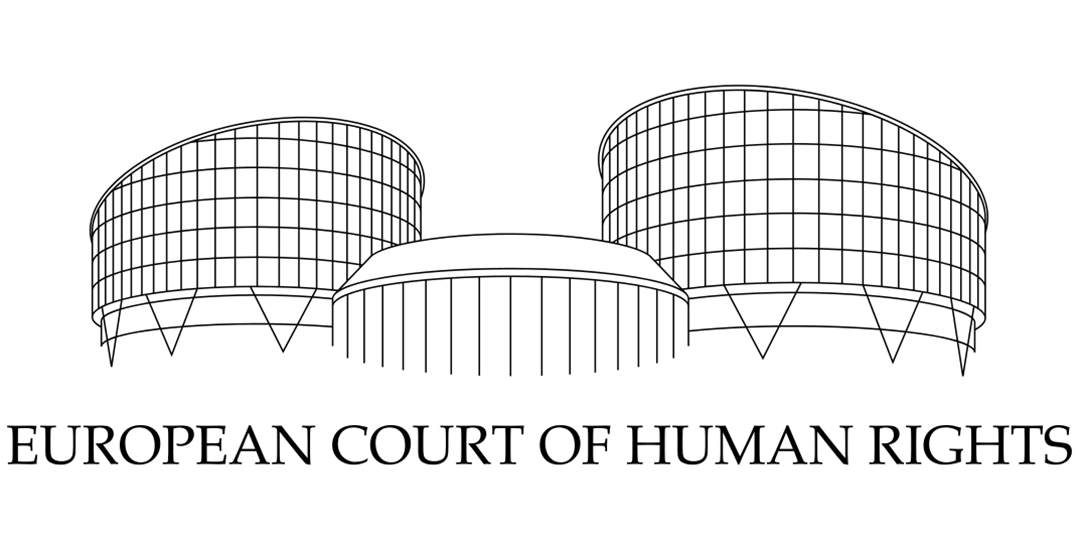
The European Court of Human Rights, a Strasbourg-based international court established by the European Convention on Human Rights and Fundamental Freedoms (ECHR) deals with individual cases. In accordance with Article 34 of the ECHR, “the Court may receive applications from any person, non-governmental organization or group of individuals claiming to be the victim of a violation by one of the High Contracting Parties of the rights set forth in the Convention or the Protocols thereto”.1 The general review of the almost 60-year-old activity of the Court allows concluding that this supranational body has been mostly examined individual appeals of violations of civil and political rights, afforded just satisfaction to injured party in cases of violations of the ECHR or the additional protocols.
Unlike the International Court of Justice (ICJ), International Criminal Court (ICC) and ad hoc tribunals the European Court of Human Rights was not created to deal with mass violations of human rights often committed during armed conflicts. However, this provision does not mean that the Court jurisdiction does not cover this kind of human rights violations. Moreover, dealing with the cases from the Srebrenica massacre to the international military operation in Iraq, the Court examined events during military activities of state-parties of ECHR outside their sovereign territory. As Kirchner argues, “the decision whether or not the Court will have jurisdiction in such cases will to a large extend depend on the question, whether or not Article 1 ECHR is applicable, i.e. whether or not the acts which are claimed to constitute a violation of the Convention are included in the scope of the term “jurisdiction” as used in Article 1 ECHR”.2
This issue is of fundamental interest in the context of inter-state territorial conflicts, when one of a party to a conflict actually exercises effective control over a part of a territory of another sovereign state. This in turn allows the Court to conclude that the term “jurisdiction” extends to the territory of sovereign states under occupation and thereby generates the responsibility of the occupying country.
The article analyzes the cases of the European Court of Human Rights related to human rights violations during the Armenia-Azerbaijan Nagorno-Karabakh conflict. On the basis of a legal analysis of the Court’s judgments, the author disposes that the Court is not only authorized to examine human rights violations during armed conflicts, and to hold a question of state accountability, but also recognize a fact of aggression of one state against another.
On 6 April 2005 six Azerbaijani IDPs brought the case against Armenia (“Chiragov and Others v. Armenia”) claimed that they were prevented from returning to the Azerbaijani district of Lachin, from where they had been forced to flee in 1992 after Armenian occupation, and thus they were unable to enjoy their properties located there and that they had not received any compensation for their wastages. The applicants submitted that “this amounted to continuing violations of Article 1 of Protocol No. 1 to the Convention and of Article 8 of the Convention”. Furthermore, “they alleged a violation of Article 13 of the Convention in that no effective remedy was available in respect to the above complaints”. Moreover, the group of IDPs claimed, “with a view to all complaints set out above, that they were subjected to discrimination by virtue of ethnic origin and religious affiliation in violation of Article 14 of the Convention”.3
In a judgment delivered by the Grand Chamber of the ECHR on June 16, 2015, the Court made an assessment on the violations of Article 1 of Protocol No. 1 (protection of property) and Articles 8 (right to respect for home and private and family life) and 13 (right to an effective remedy) of the Convention “in the present case relate to a general situation which involves the flight of practically all Azerbaijani citizens from Nagorno-Karabakh and the surrounding territories and their inability to return to these territories”.4
The Court declared that “violation of the applicants` rights occurred on the sovereign territory of the Republic of Azerbaijan” and found “the Republic of Armenia responsible for the breaches of the applicants’ rights”.5 The Court also established that “the Republic of Armenia pursues policy of ethnic cleansing against Azerbaijanis”, and held that “the Republic of Armenia is responsible for that situation persists to this day”.6
Moreover, dealing with the categories of “effective control” and “belligerent occupation”, the supranational judicial institution provides a legal assessment of the issues mainly stem from the facts of military aggression. In this respect, the case of “Chiragov and Others v. Armenia” is indicative.7
Thus, the judgment of the Court indicated that “the Republic of Armenia exercises effective control over occupied territories of Azerbaijan, including Nagorno-Karabakh and seven surrounding districts”. Moreover, with reference to the 1907 Hague Convention on respecting the laws and customs of war on land and 1949 Geneva Convention relative to the protection of civilian persons in time of war, the Court noted that “notion of effective control in fact denotes belligerent occupation”.8
Furthermore, concerning the jurisdiction of Armenia in the framework of its effective control over Nagorno-Karabakh and the surroundings districts, the Court noted in particular that “numerous reports and public statements, including from members and former members of the Armenian government, demonstrated that Armenia, through its military presence and by providing military equipment and expertise, had been significantly involved in the Nagorno-Karabakh conflict from an early date”.9
Thereby, returning to the question of the admissibility of the Article 1 of the ECHR in cases of human rights violations during military activities of state-parties of ECHR outside their sovereign territory, we can conclude that the state jurisdiction under this article is not limited to own territories of the ECHR state-parties, but extends to territories of other sovereign states where an occupant party exercises an effective control.
As Uriarte rightly notes, in order to deal with these types of breaches of applicants’ rights, “the Strasbourg Court relies almost exclusively on interpreting the European Convention on Human Rights and Fundamental Freedoms and it has therefore become the applicable legal instrument for those types of violent situation”.10 However, the author`s assertion that the Court “examines armed conflicts in the light of the ECHR, on the understanding that this remains applicable, and so avoids having to deal directly with IHL”11 (international humanitarian law), seems controversial. The Court`s judgment on the case of “Chiragov and Others v. Armenia” in which successfully interpreted IHL, particularly the landmark international documents – the 1907 Hague Convention on respecting the laws and customs of war on land and 1949 Geneva Convention relative to the protection of civilian persons in time of war, evinces that Court does not limit itself to international legal sources, widely using the norms and principles of IHL that regulates the conduct of war (jus in bello).
Moreover, this case also identifies that the European Court of Human Rights as the supranational judicial body recognizes the state-party of the ECHR as an aggressor-state. Thus, Armenia`s occupation of the Azerbaijani territories has been proved in the judgment of the international court, the decisions of which have legally binding nature.
Virtually, the legal inconsistency of the Armenian claims on “independence” of the separatist regime of the so-called “NKR” and “three-party negations” on the conflict was expressed in the fact that the state as the main, primary and universal person of international law should possess the qualifications such as “permanent population, defined territory, government and capacity to enter into relations with the other states”.12
The internationally unrecognized puppet regime of the so-called “Nagorno-Karabakh Republic”, established in the occupied territories of Azerbaijan as a result of the Armenian aggression against Azerbaijan accompanied by ethnic cleansing of the Azerbaijani population on a massive scale, undoubtedly does not conform to these qualifications. The decisions of the European Court of Human Rights decisively put an end to the Armenian speculations on this issue.
Dr. Najiba Mustafayeva is a research fellow at the Foreign Policy Analysis Department of the Center for Strategic Studies (SAM) in Azerbaijan. She is an expert in international law, human rights and conflict resolution.
najiba.mustafayeva [@] sam.gov.az
Notes:
- The Convention for the Protection of Human Rights and Fundamental Freedoms, Available at: https://www.echr.coe.int/Documents/Convention_ENG.pdf
- Stefan Kirchner, The Jurisdiction of the European Court of Human Rights and Armed Conflicts (May, 2003), Recent Developments in International Law Working Paper. Available at SSRN: https://ssrn.com/abstract=420100
- ECHR, Case of “Chiragov and others v. Armenia”, Application no. 13216/05, Strasbourg, 16 June, 2015, Available at: https://hudoc.echr.coe.int/eng#{%22itemid%22:[%22001-155353%22]}
- Ibid.
- On 12 December 2017 Grand Chamber of the European Court of Human Rights made a decision on this case ruled on the question of just satisfaction (Article 41 of the ECHR). It held, unanimously, that “the Armenian government had to pay each of the applicants 5,000 euros (EUR) in respect of pecuniary and non-pecuniary damage to each of the applicants and a total amount of 28,642.87 pounds sterling for costs and expenses” (ECHR, “Chiragov and others v. Armenia”, Application no. 13216/05, Strasbourg, December 12, 2017, Available at: https://hudoc.echr.coe.int/eng#{%22itemid%22:[%22001-179554%22]}).
- Ibid.
- The fact of Armenian effective control over Nagorno-Karabakh and the surrounding territories is confirmed in the case of “Muradyan v. Armenia” which concerned the death of the Armenian military conscript, Suren Muradyan, based in the unrecognized “Nagorno-Karabakh Republic”. According to the Grand Chamber`s judgment, “Suren Muradyan’s death and the ensuing investigation therefore fell within the jurisdiction of Armenia, thus engaging Armenia’s responsibility under the European Convention” (ECHR, Case of “Muradyan v. Armenia”, Application no. 11275/07, Strasbourg, 24 November, 2016, Available at: https://hudoc.echr.coe.int/eng#{%22itemid%22:[%22001-168852%22]}).
- Ibid.
- Ibid.
- Joana Abrisketa Uriarte, The Problems the European Court of Human Rights Faces in Applying International Humanitarian Law, (April, 2016), Available at: https://lawexplores.com/the-problems-the-european-court-of-human-rights-faces-in-applying-international-humanitarian-law/
- Ibid.
- This follows from the logic of the Montevideo Convention on the Rights and Duties of States which firstly codified the definition, rights and duties of statehood (Montevideo Convention on the Rights and Duties of States, 26 December, 1933, Available at: http://www.jus.uio.no/english/services/library/treaties/01/1-02/rights-duties-states.xml)
To Download click here.
How to Cite:
MUSTAFAYEVA, N. (2018), ‘The European Court of Human Rights and the Armed Conflict: The Case of Nagorno-Karabakh’, Political Reflection Magazine, 4(4): 16-20.



